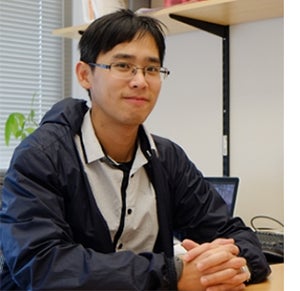
Imagine doubling the processing power of your smartphone, tablet, personal computer, or server using the existing hardware already in these devices.
Hung-Wei Tseng, a UC Riverside associate professor of electrical and computer engineering, has laid out a paradigm shift in computer architecture to do just that in a recent paper titled, “Simultaneous and Heterogeneous Multithreading.”
Tseng explained that today’s computer devices increasingly have graphics processing units (GPUs), hardware accelerators for artificial intelligence (AI) and machine learning (ML), or digital signal processing units as essential components. These components process information separately, moving information from one processing unit to the next, which in effect creates a bottleneck.
In their paper, Tseng and UCR computer science graduate student Kuan-Chieh Hsu introduce what they call “simultaneous and heterogeneous multithreading” or SHMT. They describe their development of a proposed SHMT framework on an embedded system platform that simultaneously uses a multi-core ARM processor, an NVIDIA GPU, and a Tensor Processing Unit hardware accelerator.
The system achieved a 1.96 times speedup and a 51% reduction in energy consumption.
“You don’t have to add new processors because you already have them,” Tseng said.
The implications are huge.
Simultaneous use of existing processing components could reduce computer hardware costs while also reducing carbon emissions from the energy produced to keep servers running in warehouse-size data processing centers. It also could reduce the need for scarce freshwater used to keep servers cool.
Tseng’s paper, however, cautions that further investigation is needed to answer several questions about system implementation, hardware support, code optimization, and what kind of applications stand to benefit the most, among other issues.
The paper was presented at the 56th Annual IEEE/ACM International Symposium on Microarchitecture held in October in Toronto, Canada. The paper garnered recognition from Tseng’s professional peers in the Institute of Electrical and Electronics Engineers, or IEEE, who selected it as one of 12 papers included in the group’s “Top Picks from the Computer Architecture Conferences” issue to be published this coming summer.




